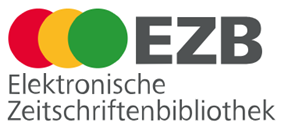Physiological Response of Crocidolomia pavonana to the Calophyllum soulattri Active Fraction
Abstract
The objective of this study was to evaluate the physiological response of the cabbage head caterpillar Crocidolomia pavonana treated with an active fraction of Calophyllum soulattri bark extract. Extraction of the test plant materials were performed with maceration method using methanol, continued by counter-current distribution separation in ethylacetate and water. Methanol fractionation of C. soulattri was performed by vaccuum liquid chromatography and the bioassays were conducted by a leaf-feeding method. The results showed that the dichloromethane fraction of C. soulattri had strong insecticidal activity against C. pavonana larvae, with LC50 of 0.05%. Sublethal treatments with the active fraction at LC15, LC50, and LC85 reduced the relative growth rate of the fourth instars by 48.9-94.1%. The treatments with the fraction at LC15 and LC50 to the fourth instars reduced the activity of invertase and protease enzyme by 20.7-24.1 and 14.4-25.14%, respectively, but increased the activity of trehalase by 26.7-120% as compared with controls.Key words: Physiological response, Crocidolomia pavonana, Calophyllum soulattri, botanical insecticide
Downloads
HAYATI J Biosci is an open access journal and the article's license is CC-BY-NC. This license lets others distribute, remix, tweak, and build upon author's work, as long as they credit the original creation. Authors retain copyright and grant the journal/publisher non exclusive publishing rights with the work simultaneously licensed under a https://creativecommons.org/


















.png) IPB University
IPB University Department of Biology
Department of Biology The Indonesian Biological Society
The Indonesian Biological Society 

